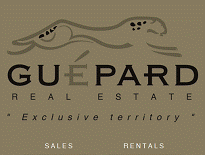Egypt: Geography
Egypt Geography Profile 2012
There are regions, Lower Egypt, Middle Egypt, Upper Egypt and Nubia.
Egypt multiplies extremes: the majority populous Arab country, 90% of its people lives in a fertile strip along the Nile (24 km at its widest point near the Fayum, on average 10 km, but can be just hundred meters). The rest is desert.
* To the south, the Nile runs into a mountain barrier, as it moves north, the landscape becomes increasingly flat and arid.
* North of Cairo, the valley turns into a vast delta of 200 km wide, similar to a wide range fertile plunging into the Mediterranean Sea.
* East of the valley is the Arabian desert to the west the Libyan desert, arid plateau punctuated by bizarre geological formations and lush oases.
* To the east, across the Suez Canal, lies the Sinai Peninsula, extending from the Arabian desert, where Mount Catherine rises to 2642 meters.
Egypt, at the northeast corner of Africa on the Mediterranean Sea, is bordered on the west by Libya, on the south by the Sudan, and on the east by the Red Sea and Israel.
Egypt is divided into unequal, extremely arid regions by the landscape's dominant feature, the northward-flowing Nile River. The Nile starts 100 mi (161 km) south of the Mediterranean and fans out to a sea front of 155 mi between the cities of Alexandria and Port Said.
Northern Africa, bordering the Mediterranean Sea, between Libya and the Gaza Strip, and the Red Sea north of Sudan, and includes the Asian Sinai Peninsula
27 00 N, 30 00 E
Africa
slightly more than three times the size of New Mexico
2,665 km
desert; hot, dry summers with moderate winters
vast desert plateau interrupted by Nile valley and delta
petroleum, natural gas, iron ore, phosphates, manganese, limestone, gypsum, talc, asbestos, lead, zinc
periodic droughts; frequent earthquakes; flash floods; landslides; hot, driving windstorm called khamsin occurs in spring; dust storms; sandstorms
agricultural land being lost to urbanization and windblown sands; increasing soil salination below Aswan High Dam; desertification; oil pollution threatening coral reefs, beaches, and marine habitats; other water pollution from agricultural pesticides, raw sewage, and industrial effluents; limited natural fresh water resources away from the Nile, which is the only perennial water source; rapid growth in population overstraining the Nile and natural resources
controls Sinai Peninsula, only land bridge between Africa and remainder of Eastern Hemisphere; controls Suez Canal, a sea link between Indian Ocean and Mediterranean Sea; size, and juxtaposition to Israel, establish its major role in Middle Eastern geopolitics; dependence on upstream neighbors; dominance of Nile basin issues; prone to influxes of refugees
















.gif?1338940414)




